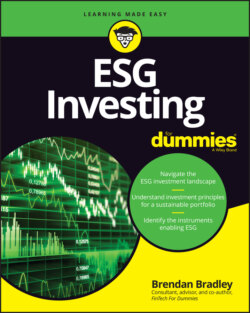Читать книгу ESG Investing For Dummies - Brendan Bradley - Страница 67
See the forest for the trees: Deforestation
ОглавлениеThe EPA defines deforestation as the “permanent removal of standing forests.” However, such removal can occur for different reasons and has a variety of destructive consequences. Reports suggest that 80 percent of deforestation results from extensive cattle ranching and logging for materials and development. It has been happening for thousands of years, primarily since humans evolved from hunter-gatherer to agricultural-based societies and needed larger swathes of land to facilitate farming and housing. Modern requirements have converted this into an epidemic, leading to the loss of animal and plant species, due to their loss of habitat, as well as the following issues:
Healthy forests act as carbon sinks by absorbing carbon dioxide. Therefore, cutting down forests releases carbon into the atmosphere and reduces their ability to act as carbon sinks in future.
Trees also help manage the level of water in the atmosphere by regulating the water cycle. In deforested areas, there is less water in the air that is returned to the soil, resulting in dryer soil and an inability to grow crops. Furthermore, trees help the land retain water and topsoil, providing rich nutrients to sustain additional forest life, without which the soil erodes and washes away, causing farmers to move on and perpetuate the cycle.
The barren land left behind due to these unsustainable agricultural routines is more susceptible to flooding, especially in coastal regions. This also has an effect on seagrass meadows, a group of marine flowering plants, which are one of the world’s most productive ecosystems. They constitute an important CO2 sink, which is responsible for about 15 percent of the total carbon storage in the ocean.
As large amounts of forest are cleared away, indigenous communities, which rely on the forests to maintain their way of life, are also under threat. The governments of countries with native rainforests generally attempt to evict the indigenous tribes before the clearing occurs.
Four main commodity supply chains — beef, soy, palm oil, and pulp and paper — are predominantly sourced from regions with high deforestation risk. The production of these commodities is worth hundreds of billions of dollars annually across the tropical forest regions of Latin America, Southeast Asia, and Sub-Saharan Africa. Within these four commodities, analysts suggest that 50 to 80 percent of current production is linked to past deforestation. The extent of production related to deforestation can differ by location, but avoiding further deforestation, while supporting restoration and rehabilitation, will require changes from all producers. Furthermore, a report on climate change and land released by the Intergovernmental Panel on Climate Change showed that 11 percent of greenhouse gas emissions are caused by poor forestry and land-use management, including commodity-driven deforestation.
In 2019, institutional investors representing US$16.2 trillion in assets under management and coordinated by two organizations — Principles for Responsible Investment (PRI) and Ceres — demanded that companies take urgent action due to the destructive fires in the Amazon, which were partly due to the accelerating rate of deforestation in Brazil and Bolivia. They argued that deforestation and loss of biodiversity not only are environmental problems but also have major negative economic consequences that need more effective management of agricultural supply chains. In addition, large corporations have been wary of the reputational risk if their supply chains are linked to these issues and have pledged to exclude deforestation from their supply chains. Meanwhile, pension funds are considering divesting holdings in transnational commodity traders operating in such countries. As a result, it’s likely that they will need to shift to deforestation-free methods in the future.
